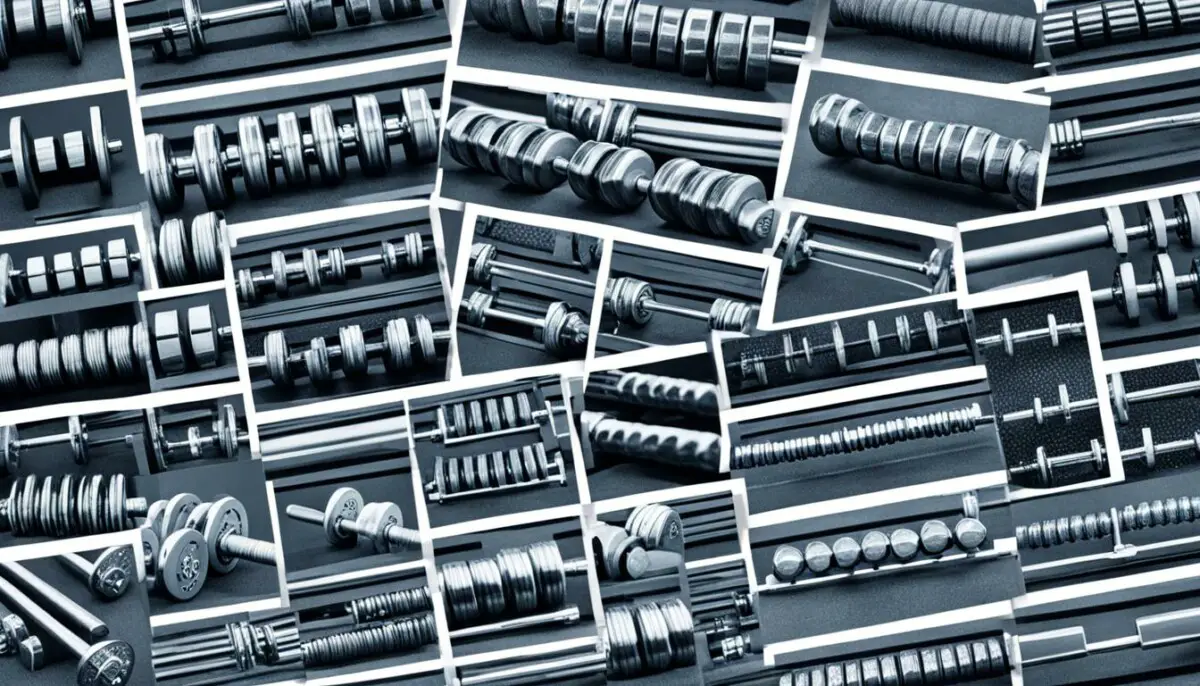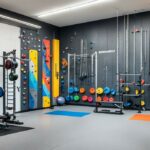Last Updated on 3 months by Francis
A barbell is a foundational tool in fitness, and there are different types of barbells designed for specific lifts and workouts. Understanding the anatomy and construction of a barbell is essential for choosing the right one for your needs. In this ultimate guide, we will explore the various barbell types, including Olympic barbells, standard barbells, specialty barbells, powerlifting barbells, and weightlifting barbells. Get ready to enhance your gym experience with the perfect barbell for your workouts.
Contents
Key Takeaways:
- There are different types of barbells designed for specific lifts and workouts.
- The anatomy and construction of a barbell play a crucial role in its performance.
- Olympic barbells, standard barbells, specialty barbells, powerlifting barbells, and weightlifting barbells are the main types of barbells available.
- Each type of barbell has unique features and specifications that cater to specific training needs.
- Choosing the right barbell for your workouts can optimize your gym experience and help you achieve better results.
Anatomy of a Barbell
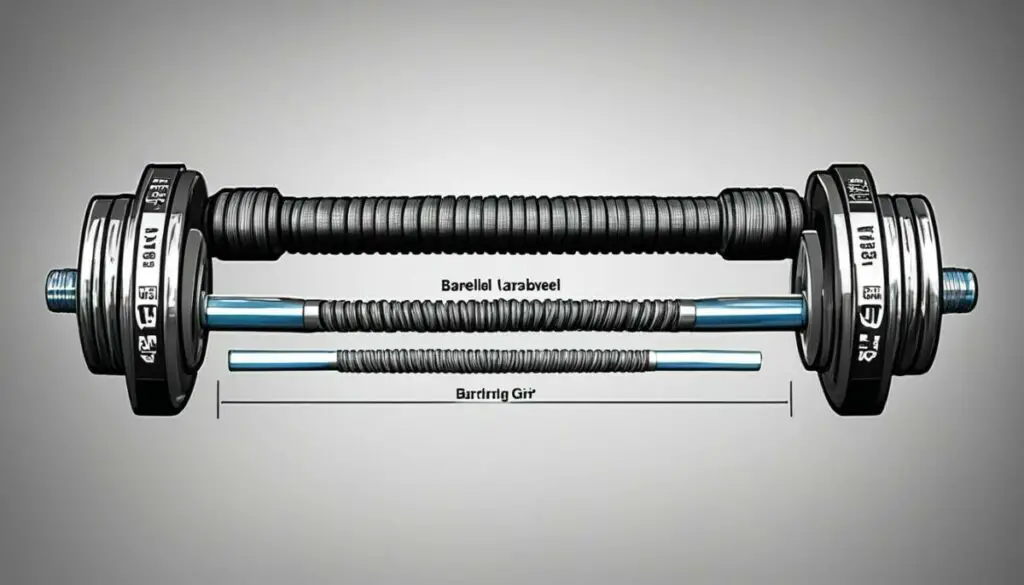
Before exploring the different types of barbells, it is crucial to have a good understanding of the basic anatomy of a barbell. A barbell is composed of several main components that contribute to its overall structure and functionality.
1. Shaft: The shaft is the long, central part of the barbell that you hold onto while performing exercises. It is typically made of high-strength steel and provides the main body and stability of the barbell.
2. Sleeves: The sleeves are the rotating ends of the barbell where you load the weight plates. They allow the plates to spin freely, reducing stress on your wrists and enhancing the efficiency of certain lifting techniques.
3. Collars: The collars are located on the outer sides of the sleeves and serve to secure the weight plates in place. They prevent the plates from sliding or moving during exercises, ensuring safety and stability.
4. Knurling: Knurling refers to the crosshatched pattern on the shaft of the barbell. It provides grip and helps prevent the barbell from slipping during exercises. The pattern can vary in aggressiveness, catering to different lifting preferences.
5. Fasteners: Fasteners, such as bolts or screws, are used to secure the collars and sleeves in place. They ensure that the different barbell components are firmly attached, maintaining the integrity and safety of the barbell.
Barbell dimensions can vary, with variations in length and diameter. The standard barbell for most gyms is 7 feet long and weighs approximately 20 kilograms (45 pounds). The diameter of the barbell typically ranges from 28 to 32 millimeters, depending on the type and intended use.
The construction of a barbell is also an important consideration. Barbell construction materials, such as steel or alloy, can affect the barbell’s durability and performance. Additionally, coatings, such as chrome or zinc, can provide added protection against rust and wear.
Understanding the anatomy of a barbell enables you to make informed decisions when choosing the right type of barbell for your specific workouts and goals.
Take a look at the image below to visualize the anatomy of a barbell:
Standard Barbell
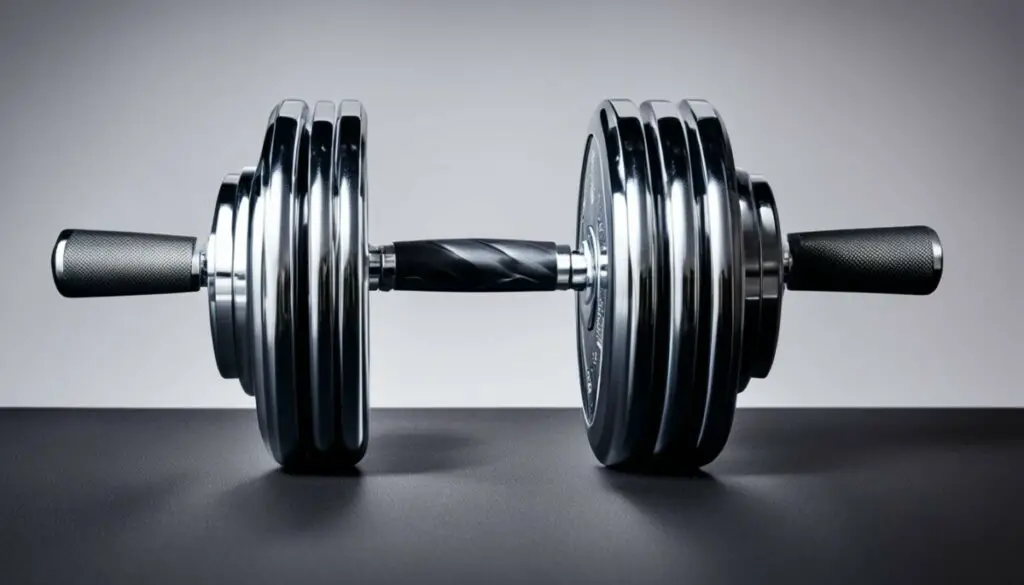
The standard barbell is a versatile and widely used type of barbell in the fitness world. With its balanced features, it provides a solid foundation for various exercises and lifting techniques, making it an essential tool for both beginners and experienced lifters. Let’s explore the key characteristics that make the standard barbell stand out.
Key Features of the Standard Barbell
- Length: The standard barbell typically measures 7 feet, providing ample space for a wide range of exercises and allowing for proper hand placement during lifts.
- Weight: Weighing about 20 kilograms (approximately 45 pounds), the standard barbell offers an optimal load for building strength and endurance.
- Diameter: With a diameter of around 29 millimeters, the standard barbell provides a comfortable grip for most lifters, promoting stability and control during workouts.
- Knurling Marks: The standard barbell features knurling marks that are spaced according to the standards set by the International Powerlifting Federation and the International Weightlifting Federation. These marks assist lifters in finding the appropriate hand placement for different exercises.
The moderate knurling on the standard barbell strikes a balance between providing grip and reducing the risk of excessive discomfort or callusing. It offers sufficient texture to ensure a secure hold without being overly aggressive.
Whether you’re focusing on powerlifting, Olympic lifting, or cross-training exercises, the standard barbell is a versatile choice that can handle various workout routines. Its well-rounded design and standard specifications make it a reliable and widely adopted tool in gyms worldwide.
To give you a visual representation of a standard barbell, take a look at the image below:
Powerlifting Barbell
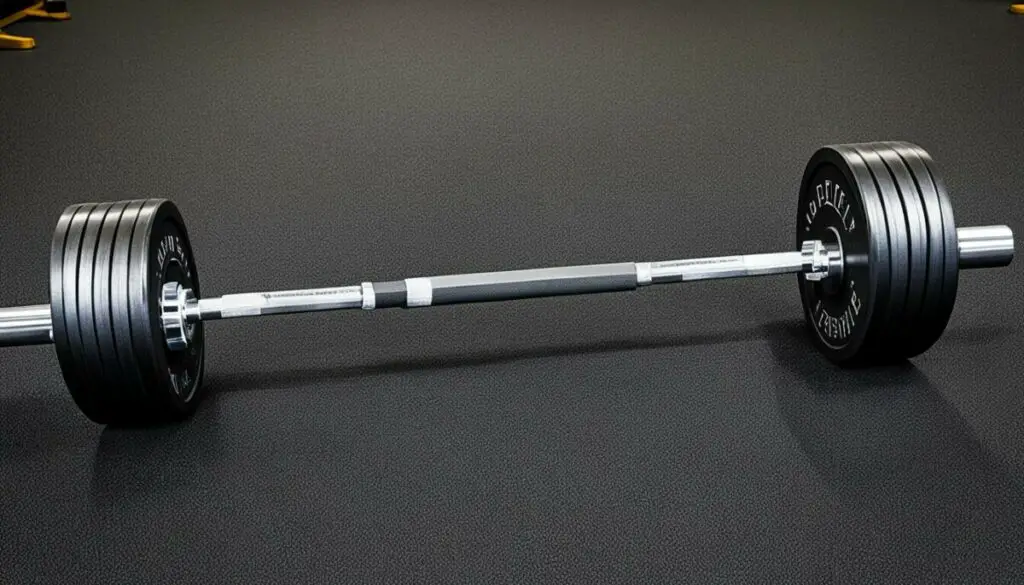
The powerlifting barbell is a specialized tool specifically designed for powerlifting movements such as the bench press, squat, and deadlift. It is essential for serious strength training and competition preparation.
The powerlifting barbell shares similar dimensions to a standard barbell, measuring 7 feet in length, weighing 20 kilograms or 45 pounds, and having a diameter of approximately 29 millimeters. However, what sets it apart is its unique features designed to optimize performance during powerlifting exercises.
One prominent feature of the powerlifting barbell is its aggressive knurling, which provides a better grip during heavy lifts. The knurling is deeper and more pronounced than that of a standard barbell, allowing lifters to maintain control and stability during challenging movements.
Power barbells also have powerlifting rings, which are distinct marks on the barbell’s shaft that indicate legal hand placements for bench press and other powerlifting exercises in competitions. These rings help ensure consistent positioning and adherence to competition rules.
Another crucial aspect of a powerlifting barbell is its higher tensile strength. This refers to the barbell’s ability to withstand heavier weights without excessive bending. The powerlifting barbell’s higher tensile strength is achieved through its construction and quality materials, making it suitable for handling extreme loads.
Whether you’re a seasoned powerlifter or a dedicated strength trainer, using a powerlifting barbell can significantly enhance your performance and help you reach new personal records. Its aggressive knurling, powerlifting rings, and higher tensile strength make it the perfect tool to tackle heavy compound movements.
Deadlift Barbell
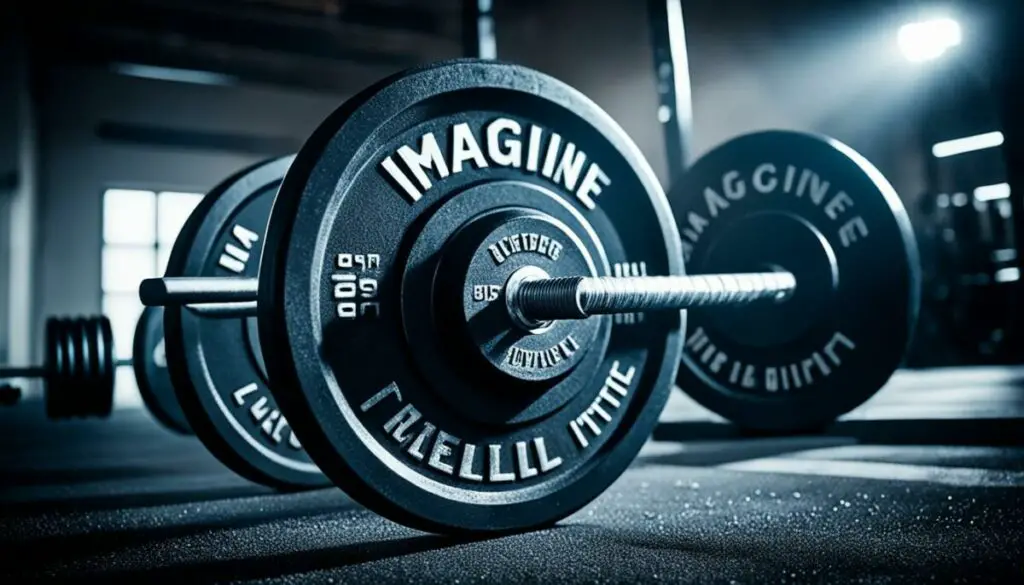
The deadlift barbell is an essential tool for performing deadlift exercises effectively. Designed with specific features to enhance your deadlifts, this type of barbell offers unique advantages that cater to advanced lifters and individuals preparing for competitions.
The deadlift barbell stands out from other barbells due to its distinct characteristics:
- Longer Barbell: The deadlift barbell is longer than other types of barbells. This additional length allows for more space between the plates, enabling you to load heavier weights and perform deadlifts with proper form.
- Smaller Diameter: With a smaller diameter, the deadlift barbell offers a better grip during your lifts. This feature ensures that you can maintain control and stability, especially when dealing with heavy loads.
- Aggressive Knurling: Deadlift barbells often feature aggressive knurling, providing enhanced grip strength and preventing slippage during intense deadlift workouts. The aggressive knurling pattern offers optimal friction to improve your lifting performance.
- Lower Tensile Strength: The deadlift barbell has a lower tensile strength compared to other barbells. This characteristic allows the barbell to bend more easily, creating a unique “whippy” feeling when pulling heavy weights off the floor. This flexibility contributes to the barbell’s dynamic nature and offers a distinct deadlift experience.
Whether you’re an experienced lifter or aiming to compete in deadlift-focused events, the deadlift barbell is a valuable addition to your training arsenal. Its specific design elements and characteristics cater to the demands of deadlift exercises, allowing you to optimize your performance and achieve your lifting goals.
Squat Barbell
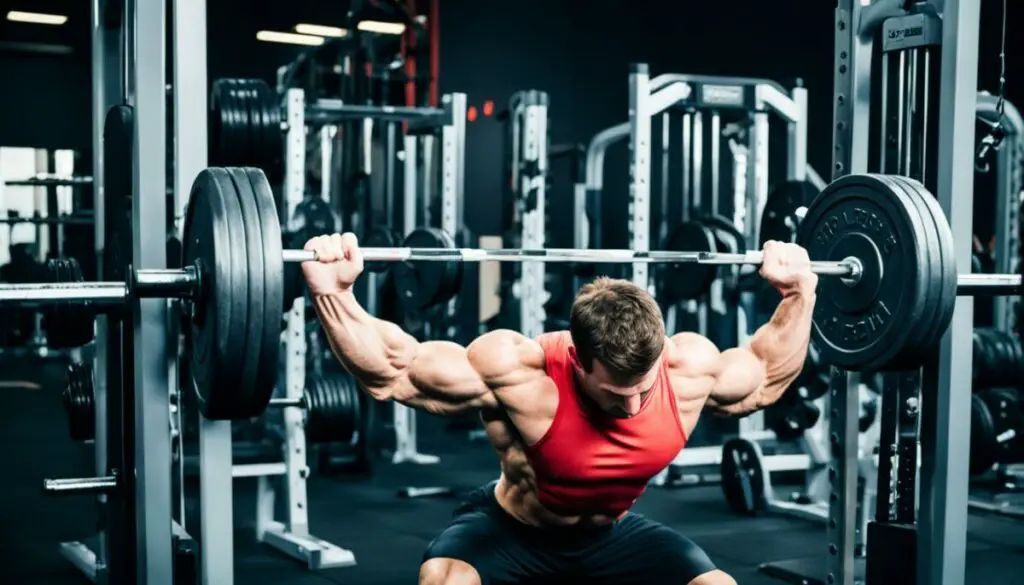
The squat barbell is an essential tool for anyone serious about their squatting and strength training. Designed specifically for squat exercises, this barbell is engineered to provide optimal grip, stability, and control while performing squats.
One of the standout features of the squat barbell is its wider knurling patch. The wider knurling patch provides a larger surface area for your hands to grip, enhancing stability and preventing the barbell from slipping during heavy squats. Some squat barbells even feature a fully knurled shaft for maximum grip, ensuring that you can maintain complete control throughout your squatting movement.
In addition to the wider knurling patch, squat barbells also have a wider barbell design compared to power barbells and deadlift barbells. This wider design provides more room for lifters to position their hands on the barbell, allowing for a comfortable and secure grip during squats.
Furthermore, squat barbells boast a higher tensile strength. This means that they are built to handle heavy weights without bending or warping under pressure, ensuring safety and durability during your squats. The higher tensile strength of squat barbells allows lifters to confidently push their limits and progress in their squatting journey.
Whether you’re a powerlifter, bodybuilder, or fitness enthusiast, a squat barbell is a valuable addition to your gym arsenal. It provides the necessary stability, grip, and strength to execute squats effectively and safely, helping you build lower body strength and improve overall athletic performance.
Investing in a high-quality squat barbell will ensure that you have the right equipment to support your fitness goals and conquer new heights in your squatting prowess.
Olympic Barbell

The Olympic barbell, also known as the weightlifting barbell, is a specialized tool designed for Olympic-style lifts such as the clean and jerk and snatch. It is the standard barbell used in weightlifting competitions and training.
The Olympic barbell is typically 7 feet in length and has a diameter of 28 millimeters, providing optimal stability and control during lifts. It is slightly thinner compared to other barbells, allowing for a more comfortable grip for athletes with smaller hands.
One noticeable feature of the Olympic barbell is the less aggressive knurling on the shaft. This ensures a secure grip without causing discomfort or excessive friction during dynamic movements.
Weightlifting rings, positioned between the knurling and the sleeves, serve as guides for hand placement during lifts. They help athletes achieve the correct position and grip width, essential for proper technique and optimal performance.
Another characteristic that sets the Olympic barbell apart is its lower tensile strength. This deliberate design choice allows the barbell to be more flexible during lifts, reducing the strain on the athlete’s wrists and shoulders.
When performing clean and jerk or snatch movements, the lower tensile strength of the Olympic barbell helps absorb and distribute the forces exerted, providing a smoother and more controlled lifting experience.
“The Olympic barbell is a fundamental tool in weightlifting, offering athletes the precision and support they need to excel in their lifts.” – Coach Sarah Thompson, Olympic Weightlifting Champion
With its unique features and design, the Olympic barbell is essential for serious weightlifters and those looking to improve their performance in Olympic-style lifting. Its versatility, stability, and reliability make it a must-have for anyone dedicated to the sport.
Specialty Barbells

Alongside the standard barbell types, there are specialty barbells designed for specific movements or exercises. These specialty barbells offer unique features and shapes that cater to different workout needs.
EZ Curl Barbell
The EZ curl barbell is specially designed with a zig-zag contouring in the handgrip area, allowing for a more comfortable grip and easier execution of bicep curls and other arm exercises. This barbell is perfect for targeting the muscles in your arms, specifically the biceps, and creating a peak contraction during your curls.
Safety Squat Bar
The safety squat bar is equipped with additional padding and a specially designed shape that sits across the shoulders comfortably. This unique barbell provides better bar control during squats and reduces stress on the wrists and shoulders. It is particularly beneficial for those with mobility restrictions or recovering from injuries, allowing them to perform squats with ease and in a more stable position.
Other Specialty Barbells
In addition to the EZ curl barbell and safety squat bar, there are various other specialty barbells available on the market. These barbells come in different shapes and profiles, each designed to target specific muscle groups or facilitate alternative exercises. Some examples include the trap bar (hex bar) for deadlift variations, the Swiss bar for neutral grip pressing movements, and the cambered bar for accommodating resistance during squats.
These specialty barbells offer lifters additional options to diversify their training routines and target specific muscles in a more focused manner. Whether you want to switch up your exercises or have specific goals in mind, specialty barbells are a valuable addition to your fitness arsenal.
| Specialty Barbells | Shape/Profile | Specific Exercises |
|---|---|---|
| EZ Curl Barbell | Zig-zag contouring in handgrip area | Bicep curls, arm exercises |
| Safety Squat Bar | Padded with a specially designed shape | Squats, lower body exercises |
| Trap Bar (Hex Bar) | Hexagonal shape with neutral grip handles | Deadlift variations, shrugs |
| Swiss Bar | Multiple grip options | Neutral grip pressing movements |
| Cambered Bar | Curved shape with accommodating resistance | Squats, bench presses |
Barbell Warranties
When purchasing a barbell, one crucial factor to consider is the warranty offered by the manufacturer. A warranty provides assurance that you are investing in a high-quality, long-lasting product. Different brands offer varying warranty periods and coverage for their barbells. Opting for a barbell with a generous warranty can offer you peace of mind and potential long-term savings.
Manufacturers’ warranties for barbells typically cover manufacturing defects and other issues that may arise during normal use. This means that if your barbell experiences any problems due to faulty craftsmanship or materials, the manufacturer will repair or replace it at no additional cost to you.
Why Are Barbell Warranties Important?
A warranty is like a quality assurance guarantee. It reflects the manufacturer’s confidence in their product’s durability and performance. By offering a warranty, they are standing behind their barbells and their commitment to customer satisfaction.
Long-lasting barbells are an investment in your health and fitness journey. A reliable warranty ensures that you can depend on your barbell for years to come without worrying about unexpected issues or premature wear and tear.
Choosing the Right Barbell Warranty
It’s essential to carefully review the terms and conditions of the warranty before making a purchase. Consider the following factors:
- Warranty period: Look for barbells with warranties that cover a substantial period of time. This indicates the manufacturer’s confidence in their product’s longevity.
- Extent of coverage: Check what the warranty covers, such as manufacturing defects, materials, and structural integrity. The more comprehensive the coverage, the better protected you are.
- Customer reviews: Read customer reviews and testimonials to gauge the manufacturer’s reputation for honoring warranty claims and providing excellent customer service.
How to Clean Your Barbell
Maintaining the cleanliness of your barbell is crucial to its longevity and performance. Proper cleaning not only prevents rust but also removes accumulated chalk and sweat, ensuring that the knurling remains in optimal condition. Follow these steps to keep your barbell clean and well-maintained:
Step 1: Gather the necessary materials
Before starting the cleaning process, gather the following materials:
- A nylon brush or soft bristle brush
- Mild soap or gym equipment cleaner
- Water
Step 2: Remove excess debris
Prior to cleaning, remove any excess debris or dirt from the barbell. Wipe it down with a clean, dry cloth or brush to ensure a more effective cleaning process.
Step 3: Scrub the barbell
Dampen the nylon brush or soft bristle brush with water and add a small amount of mild soap or gym equipment cleaner. Gently scrub the entire barbell, paying extra attention to the sleeves, collar, and knurling areas. Ensure that you clean both sides of the barbell shaft thoroughly.
Step 4: Rinse off the soap
After scrubbing, rinse off the soap residue from the barbell using clean water. This will help prevent any leftover soap from accumulating and affecting the barbell’s performance.
Step 5: Dry the barbell
Using a dry cloth, towel, or air dryer, thoroughly dry the barbell to remove any remaining moisture. This step is crucial to prevent rusting and maintain the barbell’s overall condition.
Step 6: Store the barbell properly
Once the barbell is clean and dry, store it in a suitable location to protect it from dust, moisture, and other elements that can lead to corrosion or damage.
Regular cleaning and maintenance will ensure that your barbell remains in excellent condition, allowing you to perform your workouts effectively and safely. By following these simple steps, you can keep your barbell looking and performing like new for years to come.
How Not to Treat Your Barbell
Properly maintaining and caring for your barbell is crucial, but it’s equally important to avoid mistreating and misusing it. Dropping a loaded barbell from overhead or slamming it on the ground can cause significant damage to the barbell and compromise its performance. Avoid excessive dropping, bouncing, or using barbells in ways they are not designed for. Treat your barbell with respect and follow appropriate lifting techniques to avoid unnecessary damage and ensure longevity.
Conclusion
The world of barbells offers a wide variety of options to cater to every lifter’s needs and goals. Understanding the different barbell types, their construction, and their intended uses is essential for choosing the right barbell for your workouts. Whether you’re a powerlifter, weightlifter, or engaged in specialty exercises, selecting the appropriate barbell will optimize your gym experience and help you achieve your desired results.
Take the time to research and consider the factors discussed in this guide to find the perfect barbell that suits your preferences and training goals. With the right barbell by your side, you can start lifting with confidence and reach new milestones in your fitness journey.
Remember, choosing the right barbell is not just about its physical attributes, but also about finding a tool that complements your specific workout routine and personal preferences. So go ahead, explore the different barbell options available, and make an informed decision to enhance your gym experience and maximize your gains.
FAQ
What are the different types of barbells?
The different types of barbells include Olympic barbells, standard barbells, specialty barbells, powerlifting barbells, and weightlifting barbells.
What are the parts of a barbell?
The key components of a barbell include the shaft, sleeves, collars, knurling, and fasteners.
What are the dimensions of a standard barbell?
A standard barbell is typically 7 feet in length, weighs 20 kilograms or 45 pounds, and has a diameter of roughly 29 millimeters.
What is a powerlifting barbell?
A powerlifting barbell is specifically designed for powerlifting movements such as the bench press, squat, and deadlift. It features more aggressive knurling and higher tensile strength to handle heavier weights.
What is a deadlift barbell?
A deadlift barbell is designed specifically for deadlift exercises. It is longer than other barbells and has a smaller diameter for easier gripping. Deadlift barbells have aggressive knurling and lower tensile strength for a “whippy” feel.
What is a squat barbell?
A squat barbell is designed specifically for squat exercises. It features wider knurling for better grip and stability across the shoulders. Squat barbells are longer and have higher tensile strength for better control during the lift.
What is an Olympic barbell?
An Olympic barbell, also known as a weightlifting barbell, is designed for Olympic-style lifts such as the clean and jerk and snatch. It has less aggressive knurling, weightlifting rings, and lower tensile strength for more flexibility and less friction during dynamic lifts.
Are there specialty barbells available?
Yes, there are specialty barbells designed for specific movements or exercises. Examples include EZ curl barbells for easier curls and safety squat bars for improved bar control during squats.
What should I consider when purchasing a barbell?
When purchasing a barbell, it’s important to consider the warranty offered by the manufacturer. Look for barbells with generous warranties that cover manufacturing defects and other issues that may arise during normal use.
How do I clean my barbell?
To clean your barbell, use a nylon brush, mild soap, and water to scrub away dirt and grime. Avoid using harsh chemicals or abrasive materials that can damage the barbell’s finish.
How should I treat my barbell to avoid damage?
It’s important to avoid mistreating and misusing your barbell. Avoid excessive dropping, bouncing, or using the barbell in ways it is not designed for. Treat your barbell with respect and follow appropriate lifting techniques to avoid unnecessary damage.
How do I choose the right barbell for my workouts?
To choose the right barbell for your workouts, consider factors such as the type of exercises you’ll be doing, your lifting experience, and your specific goals. Researching and understanding the different barbell types and their intended uses will help you make an informed decision.

